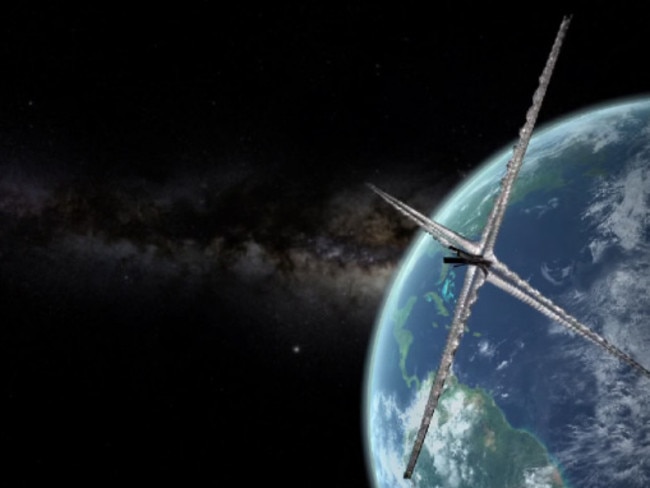Planetary Society elated as ‘crashed’ LightSail rebooted by stray cosmic ray
AFTER eight days in the dark, a privately funded solar sail satellite has rebooted itself and sent reassuring messages to Earth.
AFTER eight days in the dark, a privately funded solar sail satellite has rebooted itself and sent reassuring messages to its excited operators on Earth.
“Our LightSail called home!” US science educator Bill Nye “the Science Guy” exulted in a press release this morning. “It’s alive!”
The LightSail cubesat — a small, standardised satellite module about the size of a shoebox designed to offer universities and research organisations cheap “piggyback” rides into space — was boosted into space early last week.

It was carried aloft in the same rocket that launched the US Air Force’s ultra-secret X-37B reusable, shuttle-like spacecraft on its fourth clandestine mission on May 20.
Initially all appeared well until the tiny satellite — little more than the processor of a laptop computer bundled with an extendible frame wired to a 105 square-metre sheet of ultra-thin reflective plastic — experienced a software glitch and froze.
Contact! LightSail Phones Home after 8-Day Silence | The Planetary Society http://t.co/rjdxUItWOL pic.twitter.com/wNK6HzpEJa
— Planetary Society (@exploreplanets) May 31, 2015LIGHTSAIL: A cheap, light engine to the stars?
The problem? A coding error which caused a memory leak.
The fix? A stray cosmic ray.
Engineers had to rely on provenance for the computer to reboot as there was no way to impose a “control-alt-delete” reset from the ground.

Fortunately, cosmic rays regularly play havoc with unshielded electronics in space. Such a surge had been anticipated.
Bill Nye, who is the non-profit Planetary Society’s CEO, said: “It has been a roller coaster for us down here on Earth, all the while our capable little spacecraft has been on orbit going about its business.”
#LightSail is back! This is 1st time any team has hoped and/or prayed for a cosmic ray to zap their spacecraft! Just what the Dr. ordered.
— Mat_Kaplan (@PlanRad) May 31, 2015The LightSail team had been anticipating “three more weeks of anxiety”, but the cosmic ray gave them the lucky break they had scarcely dared hope for.
A software patch has been coded to fix the memory leak.

“After we are confident in the data packets regarding our orbit, we will make decisions about uploading the patch and deploying our sails — and we’ll make that decision very soon,” Mr Nye said.
The purpose of this LightSail test flight is to test the sail deployment system.
After days of silence, #LightSail is communicating again! pic.twitter.com/E9trtywyDT
— Dr. Bruce Betts (@RandomSpaceFact) May 31, 2015A second LightSail satellite is scheduled for next year. It is hoped this satellite will be boosted to a higher orbit where it can deploy its sail and hitch a ride into space on the power of the “solar wind” — photons being emitted by the Sun.
Join over 15,000 fellow space enthusiasts and become part of the #LightSail story. http://t.co/GfqE1ftMi9 pic.twitter.com/D6rwF0Jir2
— Planetary Society (@exploreplanets) May 31, 2015



